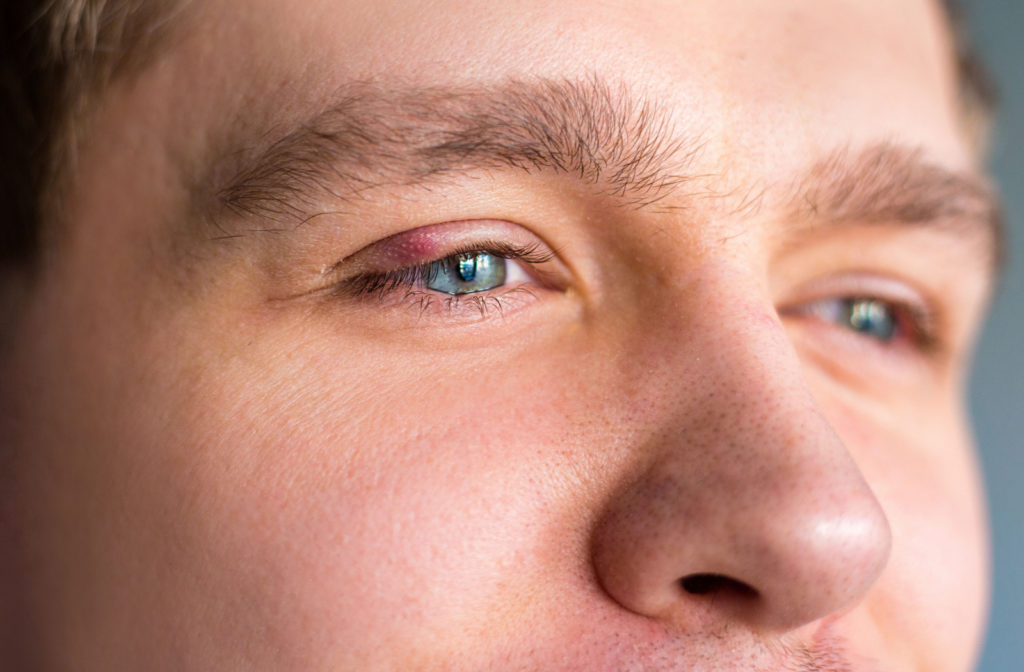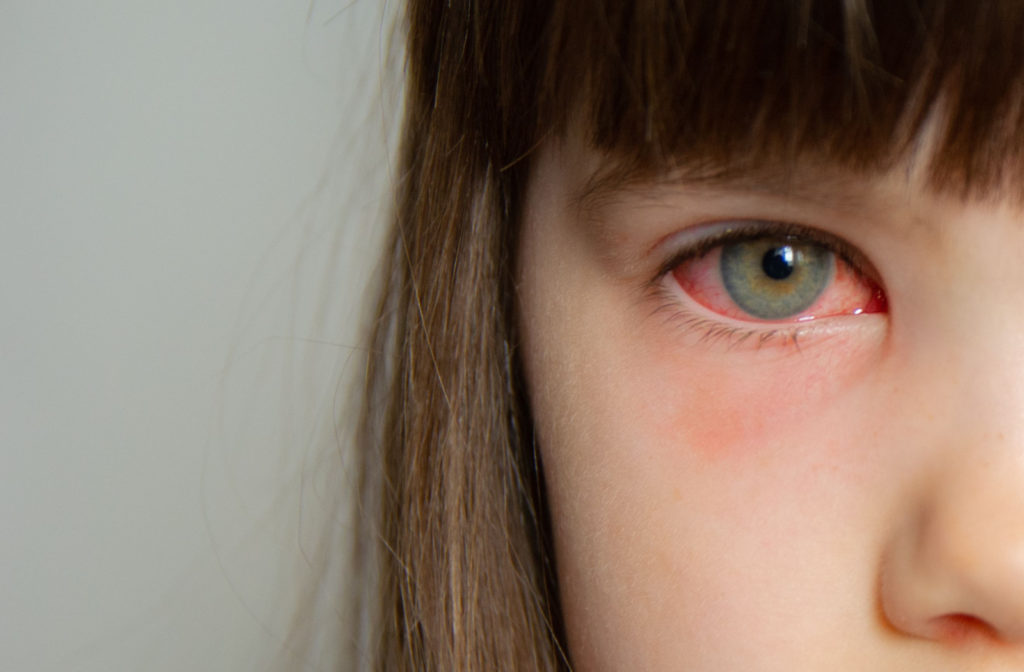Many patients mistake pink eye and styes for one another since they have similar symptoms. However, there are distinct differences between these two conditions. Understanding their differences can help you know when to visit your eye doctor for treatment.
How Do You Tell the Difference Between Pink Eye and a Stye?
Pink eye and styes cause red, irritated eyes, but you can tell them apart. Watch your symptoms, and you can tell the difference between these conditions.
The main difference between pink eye and a stye is that a stye leads to a bump near your eyelid. Pink eye doesn’t lead to bumps or pimples near the eyes.
Besides symptoms, these conditions have different causes, with pink eye occurring due to viruses, bacteria, or allergens entering the eye, and a stye developing due to an infection in or around the eyelid.
What is Pink Eye?
Pink eye, also known as conjunctivitis, refers to an inflammation of the conjunctiva—a thin layer of tissue lining the inner surface of your eyelids. When the eye becomes inflamed, it leads to redness, watery eyes, itchiness, or a gritty feeling.
There are three types of pink eye:
- Viral pink eye
- Bacterial pink eye
- Allergic pink eye
While all forms of pink eye can exhibit similar symptoms, they develop due to different irritants entering the eyes directly or through airborne particles.
What Causes Pink Eye?
The cause of pink eye depends on the type you develop—each form has a different cause.
- Viral pink eye: Viral pink eye occurs when you’re exposed to viruses like the common cold. Someone sick may cough nearby, or you can blow your nose too hard if sick.
- Bacterial pink eye: Bacterial pink eye develops when you come into contact with bacteria in several ways. You might touch your eyes with dirty hands or put contaminated substances near your eyes, like when you share makeup.
- Allergic pink eye: Allergic pink eye occurs due to allergies like pollen, pet hair, dust, or other common allergens. Unlike viral and bacterial pink eye, this form isn’t contagious.

What is a Stye?
A stye is an infection in your eyelid caused by bacteria irritating the oil glands near your eyelashes. You may notice a bump near your eye that seems red and irritated.
Symptoms of a stye include:
- Swelling around the eyelid
- Redness
- Tenderness
You can experience two types of styes, an internal or external stye. An internal stye develops inside the eyelid, typically caused by the oil-producing glands becoming infected. An external stye occurs when a hair follicle becomes infected, causing a pimple-like bump to develop.
This condition usually resolves itself over time, but you may require antibiotics if it becomes severe.
How Do You Treat Pink Eye?
While pink eye can be annoying, it typically goes away with time. You can keep your eyes moist with over-the-counter eye drops and use a cold compress (towel soaked in cool water) to reduce swelling. If you have allergic pink eye, your symptoms should improve quicker—typically when you get away from whatever triggered your symptoms.
Your eyes should return to normal within 14 days. However, you must reduce the chance of spreading your infection. Avoid sharing anything you touch your face with, and regularly wash your hands.
In some cases, pink eye may not resolve itself, making it essential to visit your eye doctor for an exam. Visit your optometrist if you experience any of the following symptoms:
- Blurry vision
- Increased light sensitivity
- Severe eye pain
- More mucus around your eyes
- Increased redness
- Symptoms that won’t go away
How Do You Treat a Stye?
Styes usually respond to warm compresses. Additionally, topical antibiotic ointments can help reduce swelling inflammation levels experienced in related diseases, while antibacterial soaps can decrease the risk of further infection.
In rare cases, surgical interventions may be needed to remove cysts. Never attempt to pop or squeeze a stye like you would a pimple—it can potentially spread your infection to the rest of your eyelid.
Your Eye Doctor is Here to Help
While pink eye and styes generally resolve with time, watch your symptoms. If your symptoms are severe or don’t go away with time, visit your eye doctor. They can examine your eyes and recommend treatments to help you enjoy comfortable vision.
Contact Total Vision Solana Beach if you experience stye or pink eye symptoms.



